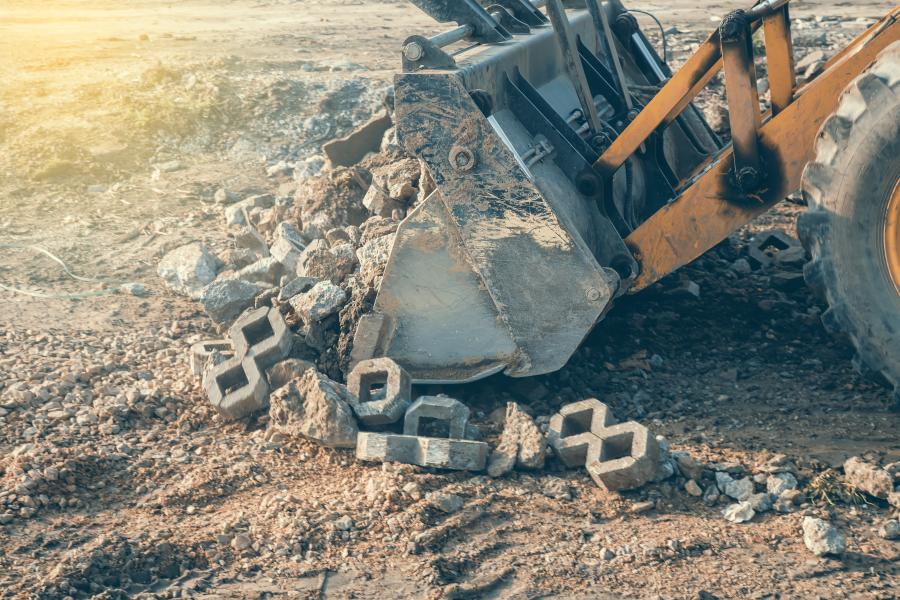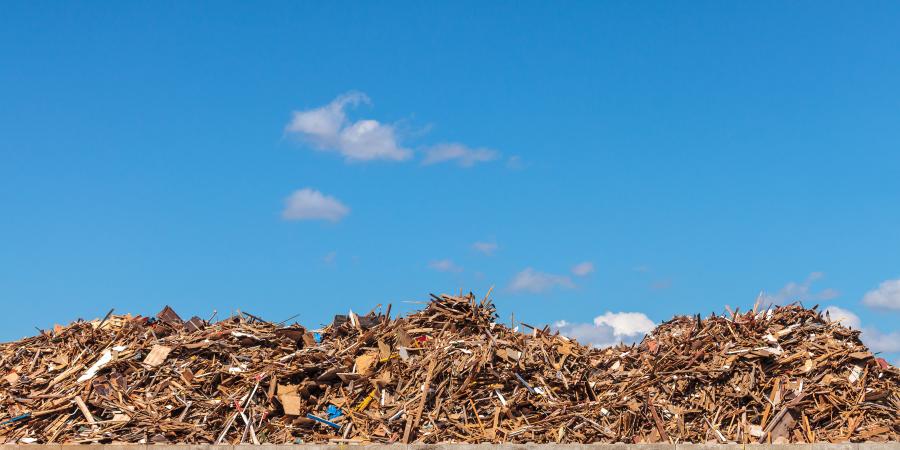Embodied carbon is the sum impact of all greenhouse gas emissions of a material throughout its life. Concrete uses the highest amount of embodied carbon, followed by steel, then ceramics. Replacing concrete with a material such as fly ash can cut down on embodied carbon on a job site.
The coronavirus pandemic has changed a lot about how the construction industry operates these days. It's driven crew members further apart from one another. It's also clogged the flow and hiked the prices of construction materials. But, it's propelled sustainability to a place of higher priority on job sites. The timing couldn't have been better.
"In the midst of the global pandemic and economic crisis, there was also a notable shift toward reversing decades of damage and a renewed focus on addressing climate change," said Bob Lester, president and CEO of Dura-Seal.
He believes it has put builders under a microscope for sustainability practices. They'll now have to prove to customers and investors that they take the future of our planet into consideration. That goes for contractors as well.
"To remain competitive in the construction market, owners must adapt," said Lester, in an AGC Constructor article on a sustainable approach to construction.
Rajeev Mittal, a managing director of software developer Autodesk, has a similar perspective. In his mind, the pandemic allowed sustainability to gain "some unexpected traction."
Mittal wrote for LinkedIn that broken supply chains proved how vital localization was in achieving business continuity.
"With many raw materials becoming impossible to source, indigenous businesses accelerated innovation in local, sustainable alternatives," he explained.
"The construction sector also witnessed a surge in the interest for 3D printing, generative design and prefabrication."
All considered to be more sustainable options, he added. "Climate action is everyone's responsibility."
Lester maintained that with more frequent uneven weather patterns and increased temperatures due to climate change, builders are approaching new projects with climate resilience in mind.
"As engineering improves, construction companies should continue staying up to date on methods to build for the long-term that will withstand extreme weather conditions," he stressed.
"This will reduce the number of repairs needed on a project and, in turn, the fuel consumption and waste that comes with these fixes."
He suggests using high-quality products specifically tailored for each project to minimize emissions and decrease carbon footprint on a job site.
"When an asphalt job is done well, it will decrease the need for larger, more expensive repairs in the future," he explained.
"With this approach, excess emissions from unneeded jobs are virtually eliminated, not to mention client satisfaction is improved."
Green Approach
Lester's first suggestion is to prioritize the sustainable materials allocated for a project. For example, choose high-quality asphalt, additives, crack fillers and pavement sealers.
Avoid going straight to materials that may be cheaper but are worse for the environment. Better materials "not only protects employees, it is better for the environment," he added.
Talk to your suppliers. "There are many ways to obtain greener materials as well. Start by speaking directly to your suppliers to figure out how and from where they're sourcing their products," suggested Lester.
"If you're ordering in large quantities or know other businesses who buy products from the same supplier, you may be able to convince your supplier to work with more sustainable partners."
Working with local suppliers also can reduce emissions as a result of shorter transports to your job site.
In a webinar, Charlie Cichetti, co-founder and CEO of Sustainable Investment Group, gave a list of 10 steps companies can take to "green up" construction sites. Obtaining green materials was high on the list.
"This one may seem like an obvious point but using green materials for both permanent and temporary structures at a jobsite is necessary for creating a green building," he said.
He urged site owners and contractors to "go above and beyond on finding cost-effective yet rapidly renewable materials."
Choose recycled materials over items without recycled content, even focus on green materials for temporary materials used during construction, suggested Cichetti.
How materials are used matters. Cichetti commented that using prefabricated or preassembled pieces in a project can be environmentally friendly.
Many times, a project owner or contractor will bring in a surplus of materials to ensure crews have enough supply to complete the project.
"Using prefabricated materials can reduce this waste because the piece is delivered whole, preventing the need for extra resources," he noted.
Preassembled pieces can also reduce carbon emissions in addition to being more cost-efficient, since they require a single shipment only.
But potentially most important, noted Cichetti: Using these prefabricated materials instead of assembling pieces onsite can reduce the risk of injury and ensure crew members' safety.
Lester believes construction managers must also ensure their crews are knowledgeable about working sustainably.
He suggests recommending ridesharing to staff to reduce transmission emissions.
"You could also help organize a ridesharing system for your employees to reduce transportation carbon emissions while getting to and from a work site."
In the same vein, Cichetti pointed to preferred parking for electric vehicles and HOV lanes for carpooling. "Why not use these same incentives for employees traveling to a job site?" posed Cichetti.
"Providing people who participate in these alternative transportation methods with closer and more accessible parking spaces can help to reduce carbon emissions by cutting down on transportation-related emissions on the job site."
Lester suggests making your machinery a friend of the environment by using it wisely.
He noted that instead of allowing equipment to run nonstop to reduce downtime between tasks, green construction sites reduce equipment usage time to save energy.
Clean up your site.
Lester also noted that job sites by nature can produce a large build up of waste. "One way to ensure the project is more environmentally friendly is to dispose of waste properly."
Rethink what you're hauling away from the site. "Many materials that might be considered waste can actually be recycled or reused in future projects," he pointed out.
Recycling and reusing can actually save your business money and time on a future project.
"Consulting with a waste removal service can also aid in ensuring your site is removing waste in the most efficient way possible," he added.
Cichetti believes tracking job site waste electronically is vital for maintaining a green construction site and diverting some of this waste.
"Completing a waste audit can help to show where waste is going and how waste management can be improved."
Universal Rewards
Cichetti sustainability webinar participants heard him talk about greening-up in terms of the global LEED green building rating system, but his ideas and suggestions could be beneficial for any job site.
He suggests performing an audit of utility usage on the construction site. He considers it vital for knowing where major cost sinks and carbon sources are on site.
"Additionally, logging information about fuel and gas is important as it has a larger footprint than other utilities on a job site."
He believes that following jobsite best practices can help to green up any construction site. As an example, Cichetti pointed out how LED temporary lighting can not only reduce the amount of electricity used on a project, but can be transferred from project to project to reduce costs.
"Furthermore, putting timers or sensors on the lights can increase these cost and sustainability benefits," he added.
Other best practices for sustainability can include just providing reusable water bottles to the crew or team; having compostable containers/plates/utensils as well as a compost bin; creating and growing a garden for projects with long timelines; and improving signage for dumpsters and sorting materials.
"These are all examples of simple and cost-effective changes that a green team can implement to greatly reduce the carbon footprint of a construction site," said Cichetti.
Virtual meetings came in with the coronavirus pandemic and stayed. So many people working remotely and communicating via video conference has actually helped reduce carbon emissions by cutting down on travel, he observed.
"Of course, some site visits will be essential, but for those that aren't, virtual meetings can help to reduce carbon emissions as well as cut down on time while still sharing information."
He pointed out that video conferencing can even be used to look at equipment or data as a team without everyone having to travel to the project site.
Number one on Cichetti's list of steps companies can take to "green up" is learning about embodied carbon.
Embodied carbon is the sum impact of all greenhouse gas emissions of a particular material throughout its life cycle. It is responsible for 11 percent of global greenhouse gas emissions.
Cichetti believes that between now and 2050, embodied carbon is projected to account for almost 50 percent of total new construction emissions.
He also believes by that 2035 we will see a shift of emphasis onto embodied carbon instead of operating carbon, which is focused on efficiency.
For example, concrete uses the highest amount of embodied carbon, followed by steel, then ceramics, he said. "Therefore, replacing concrete with something like fly ash can cut down on embodied carbon on a job site."
Lester, of Dura-Seal, believes that in the long-term, sustainability practices will continue changing due to regulation and innovation.
"But construction companies that adapt early on will attract customers who want to work with partners who have a proven track record," he said.
"By kickstarting your company's sustainable construction methods in 2021, you'll gain a competitive edge for years to come." CEG
Lucy Perry
Lucy Perry has 30 years of experience covering the U.S. construction industry. She has served as Editor of paving and lifting magazines, and has created content for many national and international construction trade publications. A native of Baton Rouge, Louisiana, she has a Journalism degree from Louisiana State University, and is an avid fan of all LSU sports. She resides in Kansas City, Missouri, with her husband, who has turned her into a major fan of the NFL Kansas City Chiefs. When she's not chasing after Lucy, their dachshund, Lucy likes to create mixed-media art.
Read more from Lucy Perry here.
Today's top stories


















